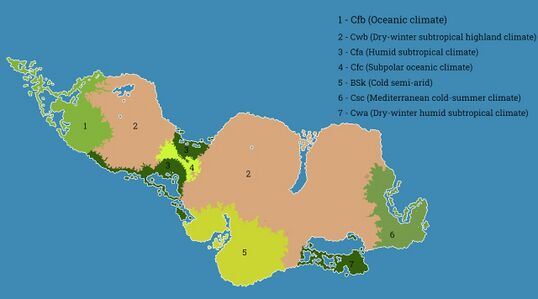Haute eee
<infobox>
<title source="title1"> <default>Haute eee</default> </title> <image source="image1">
</image> <image source="image2"> </image> <label>Type of government</label> <label>Monarch</label> <label>President</label> <label>Prime minister</label> <label>Established</label> <label>Disestablished</label> <label>Population</label> <label>Capital</label> <label>Largest city</label> <label>Notable Cities</label> <label>Currency</label> <label>Demonym(s)</label> </infobox> Haute eee (hɔːt ʔi) is a country in the north-western part of eee. It shares a land border with the neighbouring Siô eee, dZebir-Shêsek eee and completely enclaves Lake Nakhot eee. It lies to the east of Utlia and the south-west of Akaria. The country's capital and largest city is dZumiya, the location of the first settlement of the Hautites.
History
Hautites first arrived on the dZebir isles in 1489 TT and began settling in dZumiya in 1453 TT. The population grew rapidly but a schism occurred for unknown reasons, causing roughly 150 people to venture south east into the hills. Another group of 20 people ventured eastwards to form another settlement but went missing. The group of 150 eventually settled on the west of the Landbridge and the settlement grew rapidly in population and size. By y62, the size of the city demanded that they expand into the hills. Many buildings were made from concrete from the excavated gravel and the excess dirt used for local farmland. The whole terrain was completely plateaued by y374.
In 4 TT, following rising concerns over Roy Cok's leadership of Siô, a plebiscite was held to determine public consensus on Siô's separation. The plebiscite showed strong desire from Siô to separate and thus Cok appointed Pak Goose Step as mLât of Siô eee.
Geography &

The entirety of Haute eee has a temperate climate, with mild humidity year-round. Its terrain can be clearly divided into two regions: the plateau and the lowlands. The plateau makes up the majority of the country geographically.